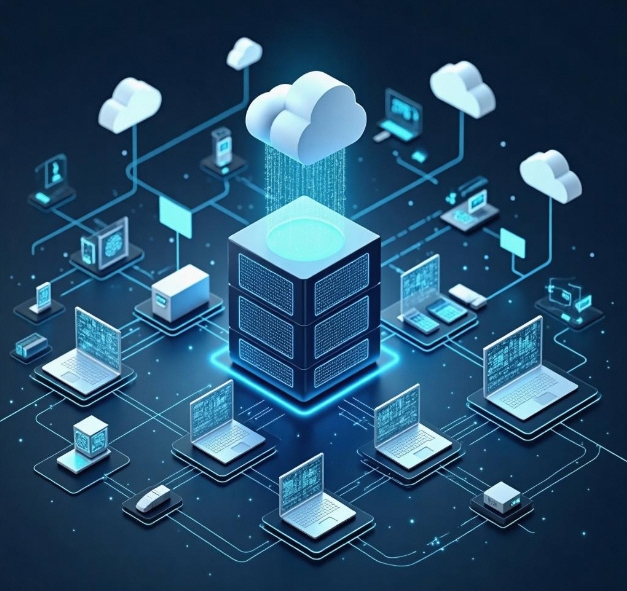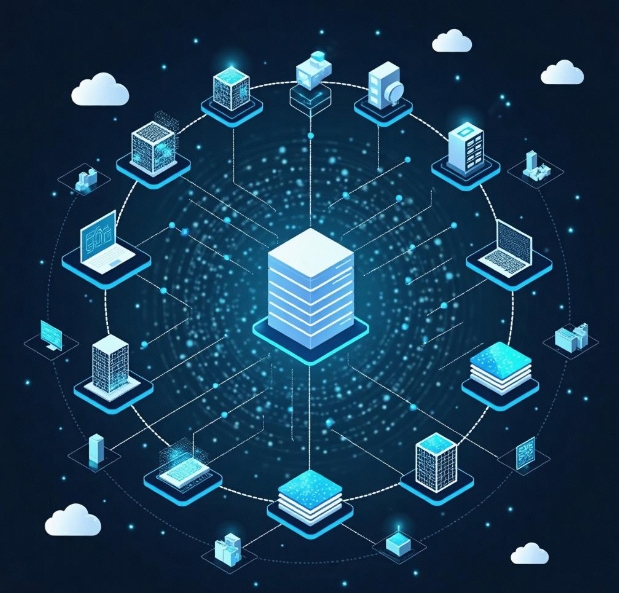Data Storage and Analysis Methods in IoT Development
- latest articles
- 1.DApp Development & Customization: Merging Diverse Market Needs with User Experience 2.Analysis of the Core Technical System in DApp Project Development 3.How to achieve cross-chain interoperability in Web3 projects? 4.How does the tokenization of points reconstruct the e-commerce ecosystem? 5.How to Set and Track Data Metrics for a Points Mall? 6.What is DApp Development? Core Concepts and Technical Analysis 7.Inventory of commonly used Web3 development tools and usage tips 8.Development of a Distribution System Integrated with Social E-commerce 9.Six Key Steps for Businesses to Build a Points Mall System 10.What is DApp Development? A Comprehensive Guide from Concept to Implementation
- Popular Articles
- 1.Future Trends and Technology Predictions for APP Development in 2025 2.Analysis of the DeFi Ecosystem: How Developers Can Participate in Decentralized Finance Innovation 3.From Zero to One: How PI Mall Revolutionizes the Traditional E-commerce Model 4.DAPP Development | Best Practices for Professional Customization and Rapid Launch 5.How to Develop a Successful Douyin Mini Program: Technical Architecture and Best Practices 6.Recommended by the Web3 developer community: the most noteworthy forums and resources 7.From Cloud Computing to Computing Power Leasing: Building a Flexible and Scalable Computing Resource Platform 8.Shared Bike System APP: The Convenient Choice in the Era of Smart Travel 9.How to Create a Successful Dating App: From Needs Analysis to User Experience Design 10.From Design to Development: The Complete Process of Bringing an APP Idea to Life
The Internet of Things (IoT) is one of the most revolutionary innovations in today's technology field. With the deep integration of the internet and various devices, IoT technology is rapidly transforming our work and lifestyles. Whether in smart homes, health monitoring, industrial automation, or smart cities, IoT has demonstrated immense potential. In IoT applications, data storage and analysis technologies, as core enablers, play a crucial role. This article will explore methods for data storage and analysis in IoT development, analyze the advantages and application scenarios of different storage and analysis technologies, and discuss how to select appropriate solutions to handle massive IoT data.
I. Characteristics of IoT Data
Before discussing data storage and analysis, it is essential to understand the main characteristics of data generated by IoT:
Massive Data: IoT devices generate vast amounts of sensor data daily, including temperature, humidity, location, sound, and more. As the number of devices increases, data volume grows explosively.
High Real-time Requirements: Many IoT applications, such as smart transportation and smart healthcare, require data to be processed and responded to quickly. Excessive delays can lead to poor system performance or even safety risks.
Heterogeneity: The wide variety of IoT devices results in significant differences in data formats, protocols, and transmission methods. Therefore, IoT data management requires strong adaptability.
Strong Data Fluidity: IoT data is often stream-based, requiring immediate processing and analysis after generation, making traditional batch processing unsuitable.
II. IoT Data Storage Methods
IoT data storage is a critical component in handling massive sensor data. The choice of storage method directly impacts data retrieval efficiency, scalability, and subsequent analysis capabilities. Based on different IoT requirements, common storage methods include the following:
1. Relational Databases (RDBMS)
Relational databases, such as MySQL, PostgreSQL, and Oracle, store data in tabular form and are suitable for managing structured data. Although IoT data is characterized by its massive volume and diversity, relational databases can still play an important role in specific scenarios. For example, when data has a clear structure and requires support for complex queries, relational databases remain a reasonable choice.
Advantages:
Clear data structure, easy to manage.
Supports ACID transactions, ensuring data consistency.
Powerful query and analysis capabilities.
Disadvantages:
Poor performance and insufficient scalability for massive data.
Not suitable for unstructured data.
2. NoSQL Databases
NoSQL databases emerged to address needs that relational databases could not meet. They typically handle semi-structured or unstructured data, offering good scalability and flexibility. Common NoSQL databases include MongoDB, Cassandra, Redis, HBase, etc.
In IoT, NoSQL databases are often suitable for storing unstructured data generated by sensors. For example, sensor data, log files, images, and audio can be efficiently stored using NoSQL databases.
Advantages:
Highly scalable, capable of handling massive data.
Supports flexible data models, adaptable to various data types.
High write performance, suitable for big data stream processing.
Disadvantages:
Does not support complex query operations.
Lacks traditional database transactional support.
3. Time Series Databases
Time Series Databases (TSDB) are specifically designed to store and process time series data, i.e., event data recorded with timestamps. Since IoT data often involves time series data, such as temperature and humidity changes, motion trajectories, etc., time series databases have become an important choice for IoT data storage. Common time series databases include InfluxDB, OpenTSDB, etc.
Advantages:
Optimized storage and query efficiency for time series data.
Supports efficient data compression and storage, saving storage space.
Optimized for time window queries and aggregation, suitable for IoT data analysis.
Disadvantages:
Primarily focused on time series data, with limited application scenarios.
Integration with other types of databases is relatively complex.
4. Distributed File Systems
For large-scale data storage, distributed file systems, such as Hadoop HDFS (Hadoop Distributed File System) and Ceph, provide an efficient and reliable data storage method. By distributing data across different nodes, they ensure high availability and scalability.
IoT applications may involve storing large amounts of data such as images and videos. Distributed file systems offer excellent storage solutions for such unstructured data.
Advantages:
Highly scalable, suitable for massive data storage.
Supports large file storage and efficient data reading.
Disadvantages:
File system operations are relatively low-level, with limited data management and analysis capabilities.
Query efficiency is inferior to traditional databases.
III. IoT Data Analysis Methods
IoT data analysis primarily follows two directions: real-time analysis and offline analysis. Real-time analysis requires systems to process and respond to data quickly, while offline analysis can tolerate longer delays and is suitable for large-scale data mining.
1. Real-time Data Analysis
Real-time data analysis typically relies on stream processing technologies. Stream processing frameworks can perform rapid calculations and analysis on data generated in real-time. Common stream processing tools include Apache Kafka, Apache Flink, Apache Storm, etc.
Advantages:
Can capture data changes in real-time with rapid response.
Suitable for scenarios requiring immediate feedback, such as smart transportation and smart homes.
Disadvantages:
Requires high computational power and real-time performance.
High difficulty, with significant development and maintenance costs.
2. Batch Data Analysis
Batch data analysis typically refers to the offline processing and analysis of historical data, mainly used for data mining and complex statistical analysis. Common batch processing frameworks include Hadoop MapReduce, Apache Spark, etc.
Advantages:
Suitable for processing large-scale data, supports complex computations and analysis.
Strong processing capability, enabling in-depth data analysis.
Disadvantages:
Requires longer processing time with higher latency.
Cannot meet real-time requirements.
3. Machine Learning and Artificial Intelligence
With the increasing volume of IoT data, traditional analysis methods are struggling to meet demands. Machine Learning (ML) and Artificial Intelligence (AI) technologies help systems better predict future trends, identify abnormal behaviors, etc., by learning from historical data. Common machine learning algorithms, such as decision trees, Support Vector Machines (SVM), neural networks, etc., are widely applied in IoT data analysis.
Advantages:
Can automatically extract patterns from data for prediction and classification.
Efficiently handles complex data patterns and heterogeneous data.
Disadvantages:
Requires substantial data support and computational resources.
Model training and tuning processes are complex.
IV. Summary and Outlook
The development of IoT has significantly advanced data storage and analysis technologies. Efficiently storing and analyzing massive, diverse IoT data has become a major challenge in IoT applications. From relational databases to NoSQL databases, and further to time series databases and distributed file systems, data storage methods have become increasingly diverse, each with distinct advantages and applicable scenarios. In data analysis, the combination of real-time analysis, batch analysis, and machine learning technologies provides robust support for IoT intelligence.
In the future, as the number of IoT devices continues to grow, data storage and analysis technologies will focus more on performance optimization, intelligent analysis, and automated system management. Meanwhile, with the development of emerging technologies like 5G and edge computing, IoT's real-time data processing capabilities will be further enhanced, opening up broader application prospects.
In IoT development, selecting appropriate data storage and analysis methods will provide a solid foundation for system stability, efficiency, and intelligence.
-

How to Use IoT Development to Enhance Supply Chain Efficiency
With the rapid development of the global economy and the deepening of digital tr···
-

Development and Innovation of the Internet of Things in the Healthcare Sector
With the rapid advancement of information technology, the Internet of Things (Io···
-

Data Storage and Analysis Methods in IoT Development
The Internet of Things (IoT) is one of the most revolutionary innovations in tod···

 Blockchain
Blockchain












